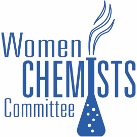“Designing Tomorrow” – Professor Julie Beth Zimmerman
|
|
Download the Event Flier HERE.
About the Speaker
Dr. Julie Beth Zimmerman is an internationally recognized engineer whose work is focused on advancing innovations in sustainable technologies. Dr. Zimmerman serves as Yale’s inaugural Vice Provost for Planetary Solutions. She holds joint appointments as a Professor in the Department of Chemical and Environmental Engineering, School of Engineering and Applied Sciences and School of the Environment at Yale University and serves as the Deputy Director of Center for Green Chemistry & Green Engineering at Yale.
Her pioneering work established the fundamental framework for her field with her seminal publications on the “Twelve Principles of Green Engineering” in 2003. The framework, in conjunction with Green Chemistry, is guiding the innovation of products and processes in academia and industry including her own research group on topics that include breakthroughs for the integrated biorefinery, carbon dioxide valorization, designing safer chemicals and materials, novel materials for water treatment, and analyses of the water-energy nexus. Professor Zimmerman is the co-author of the textbook, Environmental Engineering: Fundamentals, Sustainability, Design that is used in the engineering programs at leading universities domestically and abroad. In addition, Dr. Zimmerman is the Editor in Chief for Environmental Science & Technology, is a Member of the Connecticut Academy of Sciences, and Fellow of the Royal Society of Chemistry.
Abstract
The half-century history of environmental protection is, at best, mixed and the approaches of the past will need to be significantly changed if we are going to realize a sustainable future. While there have been improvements since the 1960’s in the most obvious and egregious problems such as air and water pollution in certain parts of the world, these advances have been uneven. The approaches to environmental protection of the past have been marked by characteristics including:
- A win-lose framework;
- Reductionist, fragmented, analytic-only thinking;
- Risk assessment;
- Narrow metrics of success; and
- Near-term vision.
The elements of a future approach that would allow for a pathway to sustainability include:
- Alignment rather than conflict between environment/human health and economic goals; Integrated systems thinking coupled with reductionist analysis;
- Sustainable design as a goal rather than risk management;
- Design for a dynamic world;
- A focus on what to invent, create and innovate rather than simply what to reduce, limit, and minimize; and
- Addressing inherent nature rather than circumstantial factors.

